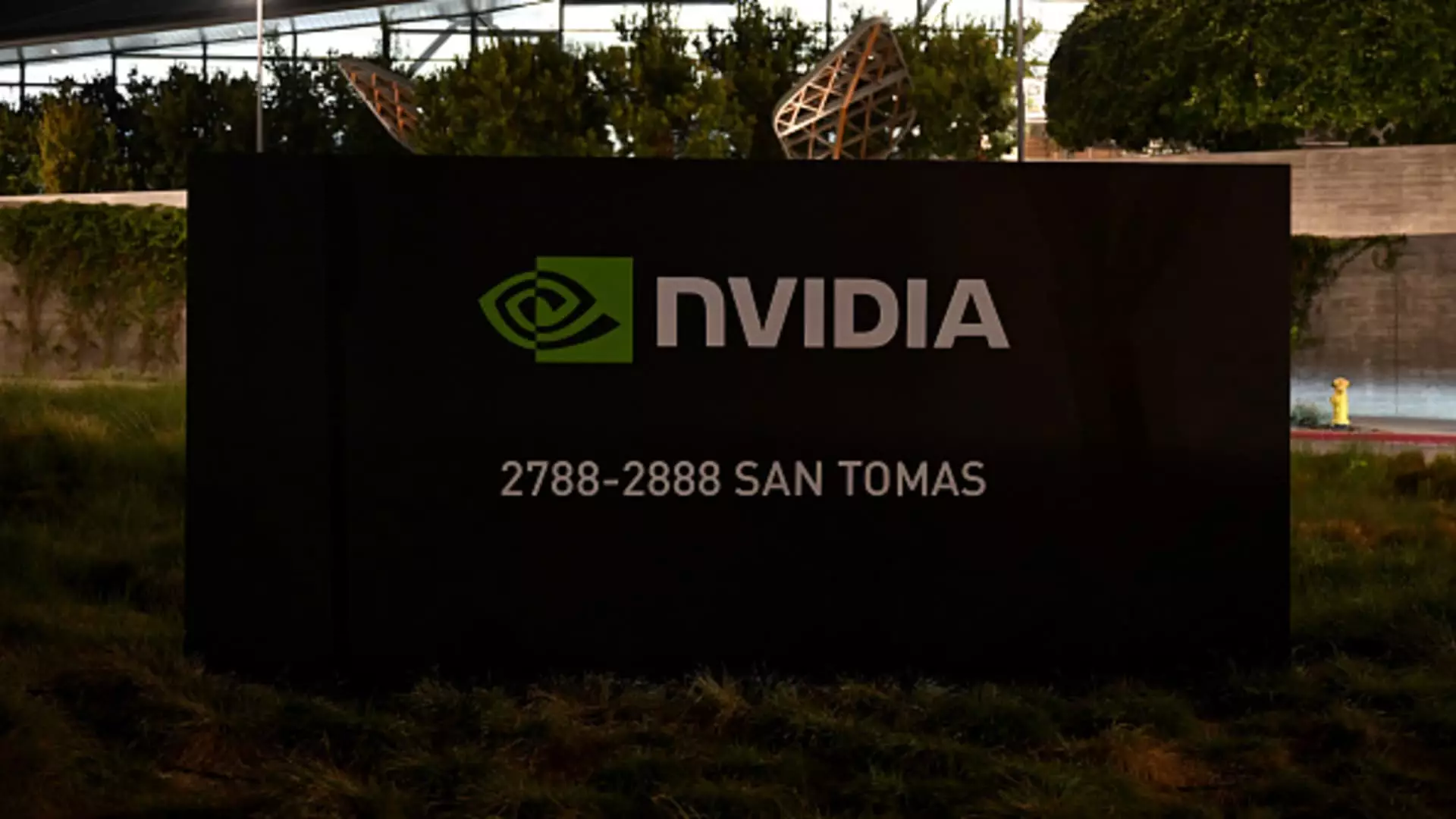In an era marked by swift technological advancements, the recent commentary from Nvidia CEO Jensen Huang has rekindled interests in the volatile artificial intelligence (AI) sector. His statements during the Goldman Sachs Communacopia + Technology Conference echoed the sentiments of a transformative period in computing—one characterized not only by innovation but by the ability to harness generative AI as a fundamental skill in the industry. His bold assertion that data centers represent a minimum of a $1 trillion opportunity highlights the enormous growth potential of this sector, particularly as it is bolstered by advancements in generative AI technologies.
The immediate reaction from the market following Huang’s presentation was palpable; Nvidia’s shares saw an impressive rise of over 8%. This increase capped off a week where various AI and semiconductor companies, including heavyweights like Advanced Micro Devices (AMD), Broadcom, and Marvell Technology, experienced double-digit gains. The optimism reflected in Huang’s words appears to have allayed recent investor concerns regarding the delayed effects of prior investments in AI technologies. Portfolio managers, like John Belton from Gabelli Funds, noted that Huang’s insights suggest sufficient demand to sustain growth for the upcoming years, which excited investors and provided a fresh impetus for their portfolios.
Investors are now poised at a crossroads, considering both immediate and long-term opportunities spurred by Huang’s perspective. Analysts are increasingly recognizing the hardware sector as a prime beneficiary in the unfolding narrative around AI. CFRA’s Angelo Zino suggests that companies involved in manufacturing and supplying GPUs, such as AMD, are positioned for short-term gains as the AI landscape evolves, fostering an environment ripe with competition and innovation.
While Nvidia often stands at the forefront of AI innovation, the landscape is dotted with emerging players also striving for recognition. For example, networking giants like Broadcom and Marvell Technology are not only supporting AI endeavors but are also developing bespoke silicon chips for major corporations like Meta Platforms. This diversification of investment broadens the potential for growth, potentially leading to a more inclusive AI ecosystem.
Additionally, the cloud infrastructure market has entered an exciting phase, with companies like Micron Technology seeing a surge in demand for memory due to growing data storage needs. The launch of Apple’s iPhone 16, integrated with AI features dubbed Apple Intelligence, signifies the competition amongst tech giants, albeit with mixed reviews from analysts suggesting that these updates may not herald a new era of upgrades as initially anticipated.
Despite the immediate stock market exuberance, some financial experts urge caution. Mark Malek of SiebertNXT posits that the AI hype could mirror the fervor leading up to the dot-com bubble of the early 2000s, asserting the importance of focusing on sustainable growth rather than fleeting market trends. He emphasizes that while public technology companies such as Microsoft, Alphabet, and Amazon will continue to benefit from AI advancements, the most significant innovations will likely emerge from private enterprises, which often operate beneath the radar yet are pivotal to next-generation AI solutions.
The ongoing development of AI applications suggests a larger trend in the tech industry: the transition from merely creating hardware and software to developing end-user applications that make AI an indispensable part of daily life. Companies like Applied Materials and KLA Corporation are expected to play a critical role in facilitating this transformation, supporting infrastructure and equipment as the demand for AI solutions escalates.
In summation, the recent comments from Nvidia’s CEO have enthused the investment community, providing a renewed sense of optimism in the AI sector. As companies navigate the complexities of development, investment strategies must be well-considered, striking a balance between leveraging short-term trends and fostering long-term growth. As we stand on the brink of what Huang describes as a computer revolution, the future of AI holds limitless potential, but it will require careful analysis and strategic foresight from investors aiming to capitalize on this burgeoning reality.

